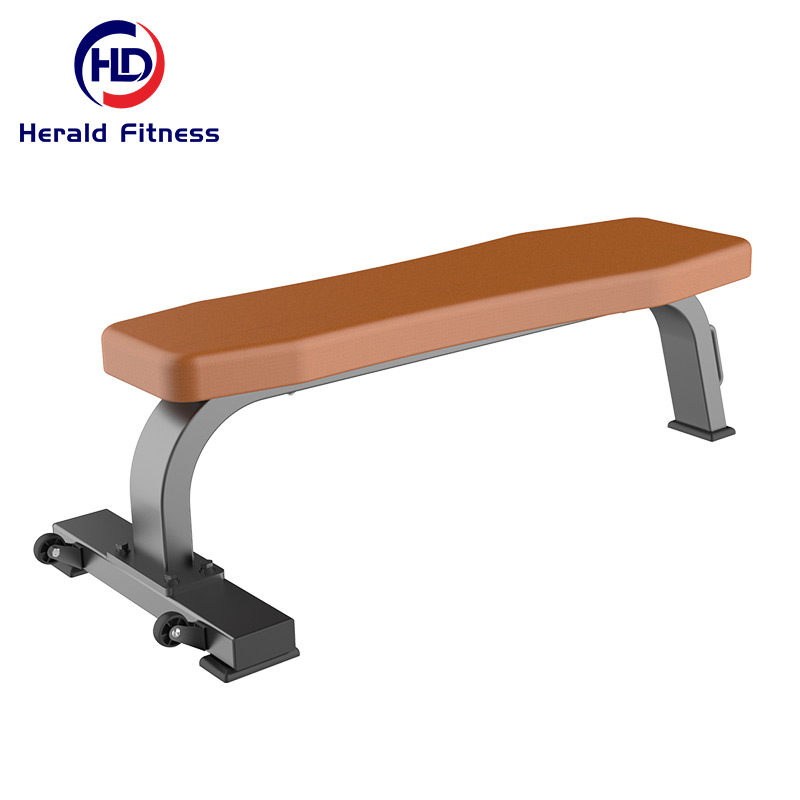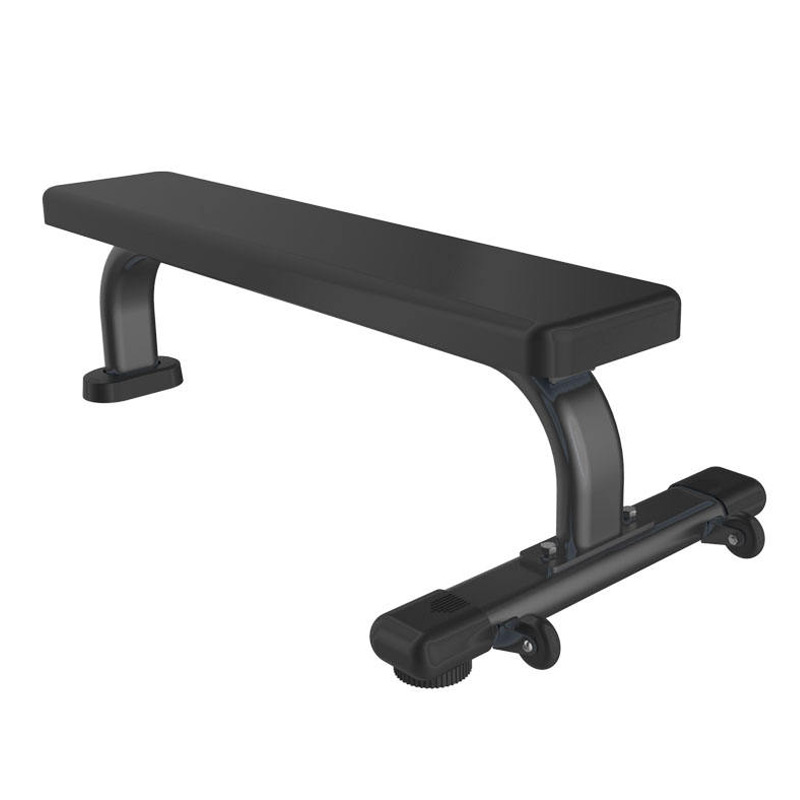The Flat Bench is a versatile and essential piece of gym equipment widely used for strength training and bodybuilding. Its primary purpose is to provide a stable, flat surface for a variety of exercises, including bench presses, dumbbell presses, and more. Here’s an introduction to its features, benefits, and proper usage:
Features of the Flat Bench
- Flat Surface: The bench has a flat, horizontal surface that allows for a wide range of exercises, particularly those targeting the chest, shoulders, and triceps.
- Padding: Includes cushioned padding on the bench to provide comfort and support during exercises. The padding is typically covered with durable, easy-to-clean material.
- Sturdy Frame: Constructed with a robust frame made from steel or heavy-duty materials to ensure stability and safety during use.
- Adjustability (Optional): Some flat benches offer adjustable features, allowing users to modify the angle of the bench for different exercises. However, traditional flat benches remain fixed in position.
Benefits of Using the Flat Bench
- Chest Development: Essential for performing various chest exercises, such as bench presses and dumbbell presses, which help in developing and strengthening the pectoral muscles.
- Upper Body Strength: Supports exercises that target the shoulders, triceps, and upper back, contributing to overall upper body strength.
- Versatility: Can be used for a wide range of exercises beyond chest presses, including dumbbell flyes, seated overhead presses, and more.
- Stability: Provides a stable and secure platform for performing exercises, reducing the risk of injury and improving workout effectiveness.
- Foundation for Training: Serves as a fundamental piece of equipment in strength training and bodybuilding routines, making it a staple in any gym.
Proper Usage
- Setup: Ensure the bench is positioned on a flat, stable surface. Check that the padding is in good condition and that the bench is securely anchored if it has adjustable features.
- Starting Position: Lie down on the bench with your back flat against the surface and your feet firmly planted on the floor. Your head, shoulders, and hips should remain in contact with the bench.
- Execution: Perform the desired exercise by following the proper movement pattern. For example, in a bench press, grip the barbell with hands slightly wider than shoulder-width apart, lower the barbell to your chest, and then press it back up to the starting position.
- Breathing: Exhale during the exertion phase of the exercise (e.g., pressing the barbell up) and inhale during the return phase.
- Repetitions: Perform the desired number of repetitions and sets based on your training goals.
Tips for Effective Use
- Warm-Up: Warm up your muscles with light exercises or stretches before using the bench to prevent injury and improve performance.
- Proper Form: Maintain proper form during exercises to maximize effectiveness and reduce the risk of injury. Keep your back flat against the bench and avoid arching excessively.
- Controlled Movements: Perform exercises with controlled movements to ensure proper muscle engagement and to prevent strain.
- Weight Selection: Choose a weight that allows you to complete your repetitions with good form. Gradually increase the weight as you build strength.
- Adjustments: If using an adjustable bench, ensure all settings are locked in place before starting your workout.




















































Reviews
There are no reviews yet.